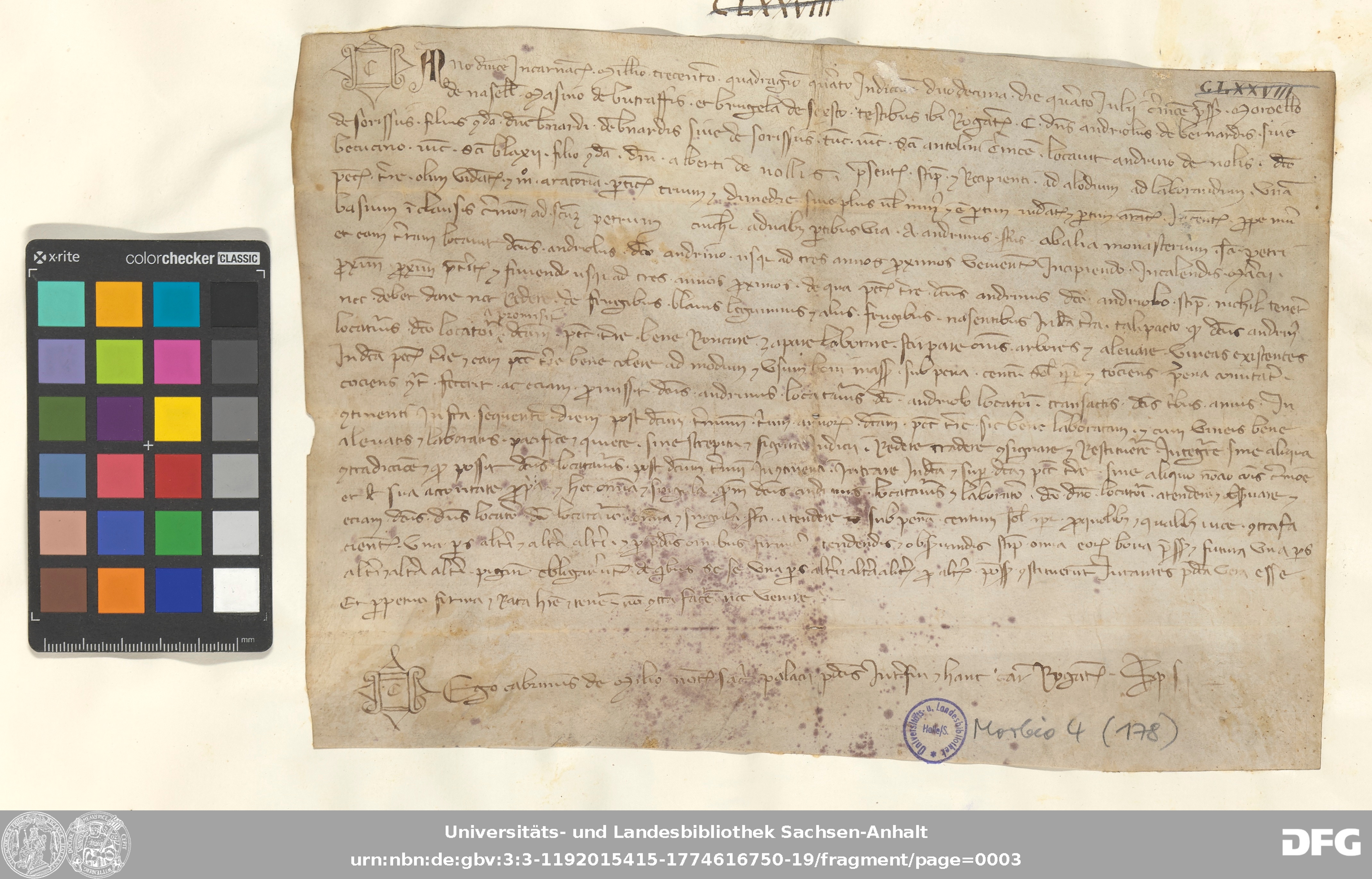Charter: Morbio 4 (178)
Signature: Morbio 4 (178)
Add bookmark
Edit charter (old editor)
1344, Cremone
Andriolus de Bernardis, genannt de Sorissiis, Sohn des
verstorbenen Bernardus de Bernardis aus der Nachbarschaft von St.
Antolini in Cremona, ebenfalls genannt de Sorissiis, verpachtet an
Andianus de Nolis, genannt Betucino, aus der Nachbarschaft von St.
Blaxii ebendort, Sohn des verstorbenen Albertus de Nollis, als Allod ein
Stück Land nahe Murbassium im Stadtgebiet Cremonas. Aussteller:
Source Regest:
urn: urn:nbn:de:gbv:3:3-1192015415-1774616750-19
doi: 10.25673/114662
urn: urn:nbn:de:gbv:3:3-1192015415-1774616750-19
doi: 10.25673/114662
Current repository:
Universitäts- und Landesbibliothek Sachsen-Anhalt HalleCharter on the archive's website
Universitäts- und Landesbibliothek Sachsen-Anhalt Halle
Material: Pergament
Dimensions: 1 ungezähltes Blatt, Illustrationen, 19 x 27 cm
Condition: Erhaltungszustand: moderat



- Die Illustrationen sind: Notarszeichen
Comment
Handschrift, (DE-588)4023287-6, (DE-627)10457187X, (DE-576)208948376Urkunde, (DE-588)4062132-7, (DE-627)104675098,
(DE-576)209142618
Language:
Places
- Cremone
Persons
- Andianus de Nolis, Cremona, genannt de Betucino, Sohn des Albertus de Nollis
- Andriolus de Bernardis, genannt de Sorissiis, Sohn des Bernardus de Bernardis aus Cremona, seinerseits genannt de Sorissiis
Universitäts- und Landesbibliothek Sachsen-Anhalt, Morbio 4 (178), in: Monasterium.net, URL <https://www.monasterium.net/mom/DE-ULBST/Morbio/Morbio_4%28178%29/charter>, accessed 2025-02-24+01:00
You are copying a text frominto your own collection. Please be aware that reusing it might infringe intellectural property rights, so please check individual licences and cite the source of your information when you publish your data
The Charter already exists in the choosen Collection
Please wait copying Charter, dialog will close at success